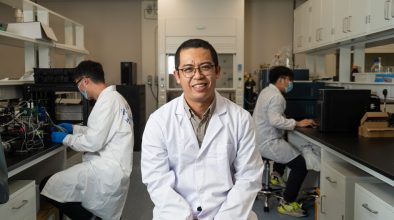Food waste hurts the environment and importing ingredients pushes up the carbon footprint. But thanks to Macao’s culinary eco-warriors, the city has been coming up with solutions – and it’s now on the road to becoming more gastronomically sustainable.
When you were young, at mealtimes, did your parents tell you not to waste your food? Even if your stomach was bloated and you couldn’t manage another mouthful, you still had to finish those final few morsels because there are ‘starving children out there who have nothing to eat’. And your parents were right. There are starving children out there. Millions of them – and the amount of food waste that is produced every day by the human race could feed them and then some. But help is here – there are businesses and people in Macao who are trying to do something to help make our planet more sustainable when it comes to food, sustenance and gastronomy.
Every year, according to a report published last month by the UN’s Intergovernmental Panel on Climate Change, 25 to 30 per cent of all the food in the world that’s purchased for human consumption – equating to about 1.3 billion tonnes – is lost or wasted. And it’s not just that all that food could feed the starving – it’s the effect all this waste has on the planet. Global food waste and food loss is responsible, it is claimed, for up to 10 per cent of all human-made greenhouse gas emissions, which trap heat in the atmosphere and accelerate climate change.
As a world-leading gastronomic destination that receives more than three million visitors every month, Macao shoulders a ton of responsibility when it comes to limiting the environmental impact of its hospitality industry – in particular, the amount of food waste it creates on a daily basis. But the city faces major challenges: primarily, the lack of space in the SAR for farming and, as a result, an almost total reliance on importing foods, thus creating a significant carbon footprint. Another challenge is dealing with the food waste itself and all that packaging, especially as Macao’s landfill sites and incinerators are already running at capacity.
Welcome to the movement
Today, there are businesses, people and organisations in Macao – which has been a UNESCO Creative City of Gastronomy since 2017 – who are facing these challenges head-on and trying to battle food waste and the carbon footprint and, at the same time, creating a more sustainable gastronomic approach in the SAR. This includes the government, which, over the past few years, has committed to several initiatives in a bid to encourage the city’s many hospitality providers to minimise their impact on the environment.
One of the most important initiatives in terms of gastronomy – an industry which the government sees as a key lever for nurturing cultural diversity and supporting sustainable growth in the city – is its four-year action plan for forging Macao into a Creative City of Gastronomy. This plan, which was discussed at the second ‘Macao – Creative City of Gastronomy’ annual work meeting only a few weeks ago, includes promoting Macao as a ‘city of gastronomy’ at home and across the world, organising culinary educational programmes and supporting the development of the local catering industry.
Another more targeted initiative when it comes to sustainability is its collaboration earlier this year with National Geographic, launching ‘The Great Green Food Journey’, a campaign aiming to locate, support and promote sustainable practices in the city’s food and beverage sector. Under the campaign, themed videos were produced – one of them dedicated to sustainability – and they were broadcast across multiple channels as well as on LED screens at Macao Government Tourism Office (MGTO)’s Tourist Information counters.
So the government – including the MGTO, which is planning to create a database of Macanese dishes to help maintain the unique and rich culinary heritage of the city for future generations – is part of a growing movement dedicated to gastronomic sustainability in the city. But there are also businesses and individuals who are playing their part. Restaurants and educational organisations, for instance, are in the thick of the movement. From eateries growing their own vegetables and herbs to catering establishments who are using new technologies to deal with their food waste, Macao is becoming a hotbed for those working towards a more sustainable future.
People in Macao are becoming more and more aware of the importance of sustainability.
Chef Alex Gaspar
Sustainable sourcing
One of the major players pushing the gastronomy sustainability movement forward is Macao’s Institute for Tourism Studies (IFT). The IFT runs higher education programmes and gives its students industry training in its restaurants, which are run by its chef de cuisine, Hans Lee Rasmussen, who believes sustainability is ‘fundamental’ in the kitchen. He says: “All the kitchens that I’ve worked in practice full utilisation of all the ingredients. That means if you buy a chicken, you use the carcass for stock, the breasts perhaps for a lunch dish and the legs for a mousse or for the cold larder section.”
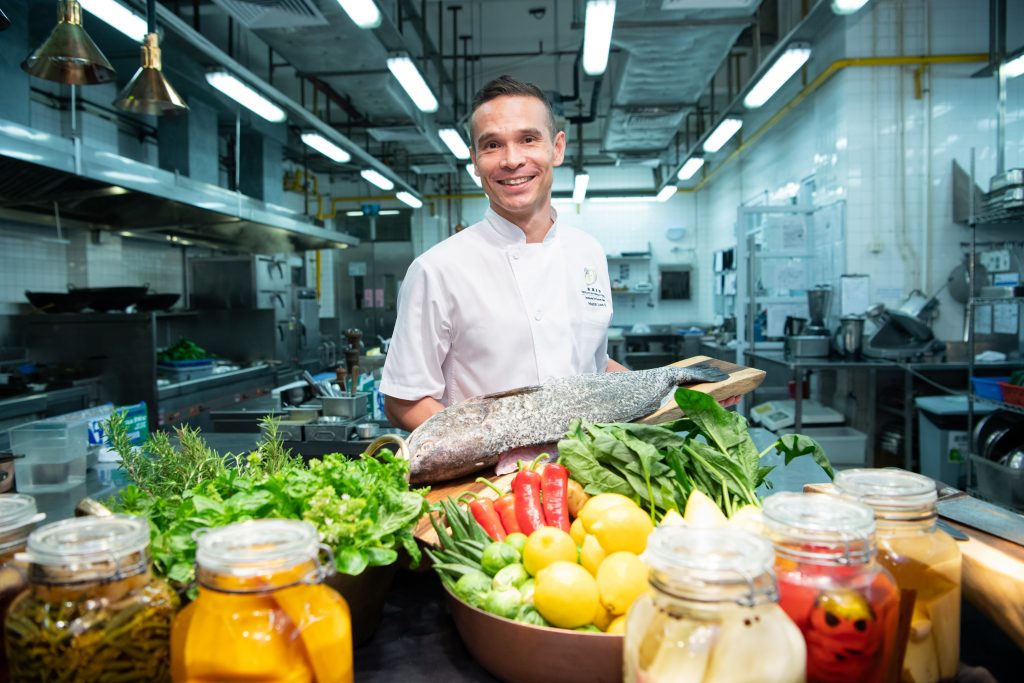
Chef Rasmussen also sees the sourcing of ingredients as critical to sustainability. “It is challenging to find local ingredients in Macao,” he admits, “so I prefer to call [our sourcing] regional. We can go down to the fish market and buy fresh local fish, but it’s the vegetables that are more of a problem. I prefer to explore the China market because the distance of travel is shorter than getting it from France or Australia.”
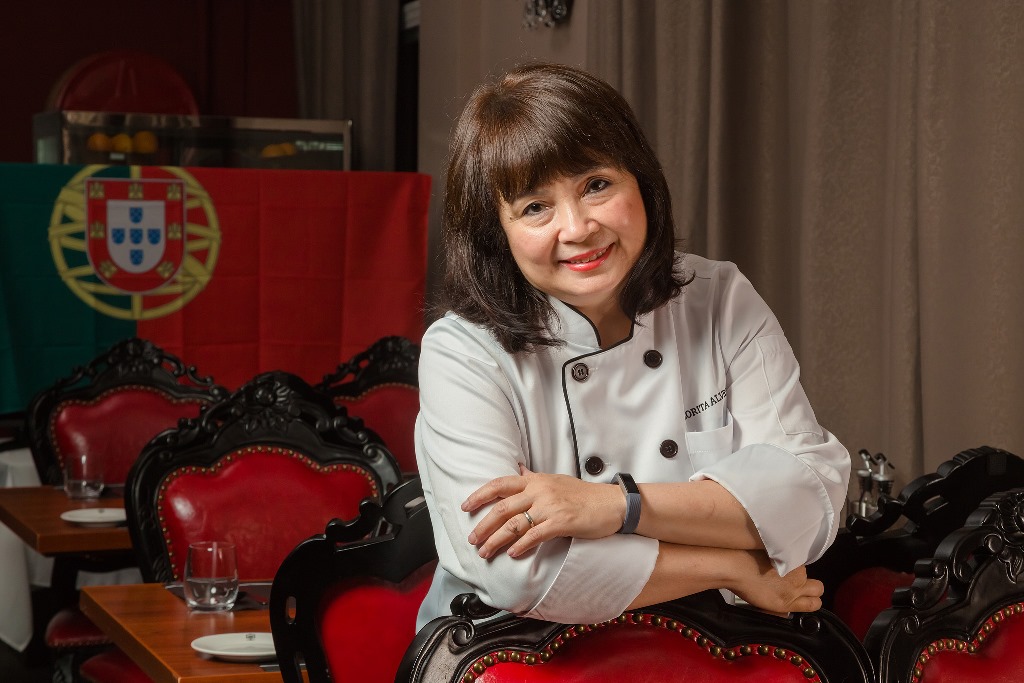
Chef Florita Alves, from Taipa Village’s Macanese restaurant La Famiglia, explains that they deal with the sustainability problem in a similar way. “We always try to find ingredients that are sustainable and/or organic whenever we can,” she says. “We try to get the most out of all of our ingredients and minimise any waste. With meat, we keep the parts that do not go into a dish to make stock which we then use to make sauces and other dishes. For our minchi, we use meat sourced from the local fresh produce market. The potatoes and eggs are from China.”
Another way to reduce the carbon footprint is to grow as much as possible in-house – or, at least, in-garden. Lacking the space needed to grow large quantities of vegetables, the IFT has come up with an innovative solution to grow herbs with zero impact. Chef Rasmussen explains: “We have a garden where we grow common herbs like basil, parsley, chives and so forth. They are started by aquaponics. We have a system outside the restaurant – fish eat the nutrients and excrete them in the water, and that is picked up by the plants.”
Chef Rasmussen also makes a key point: education is important when it comes to being more sustainable. “For our students,” he says, “it’s good for them to see that herbs don’t only come from plastic bags in supermarkets. If it takes three weeks to grow one branch of basil, then you think a little bit more before you throw away a branch because it’s a little bit dark on one of the leaves. So it’s about having a new state of mind.”
As raising animals to produce meat uses up so many natural resources, another way to reduce the environmental impact of a restaurant is to use plant-based alternatives. Chef Rasmussen reveals that, for educational purposes, he’s going to try Impossible Meat – imitation meat from American plant-based protein company Impossible Foods – on his menus. “I may do something called the ‘Impossible Minchi’,” he says. “It’s really a Macao dish. But I hope the people of Macao aren’t going to kill me! However, I’m going to do the traditional minchi as well – and then people can order one of each and see if they can taste the difference.”
High on herbs
The gaming operators are a hugely important cog in the city’s sustainable gastronomy movement. At MGM Macau, herbs are grown in a special garden on its rooftop to limit the carbon footprint of shipping in fresh produce from overseas. The team is also focusing on education to empower team members to think more about sustainability. Geoffrey Simmons, culinary director at MGM, says: “We are growing 12 species of herbs, including rosemary, basil and Italian parsley. Our cold production kitchen team is responsible for the maintenance of the garden and we have a plan that involves all aspects from the planting stage all the way to the harvest. By doing so, we also allow our team members to understand the process of growing the herbs and to create a stronger connection with the dishes we create and cook.”
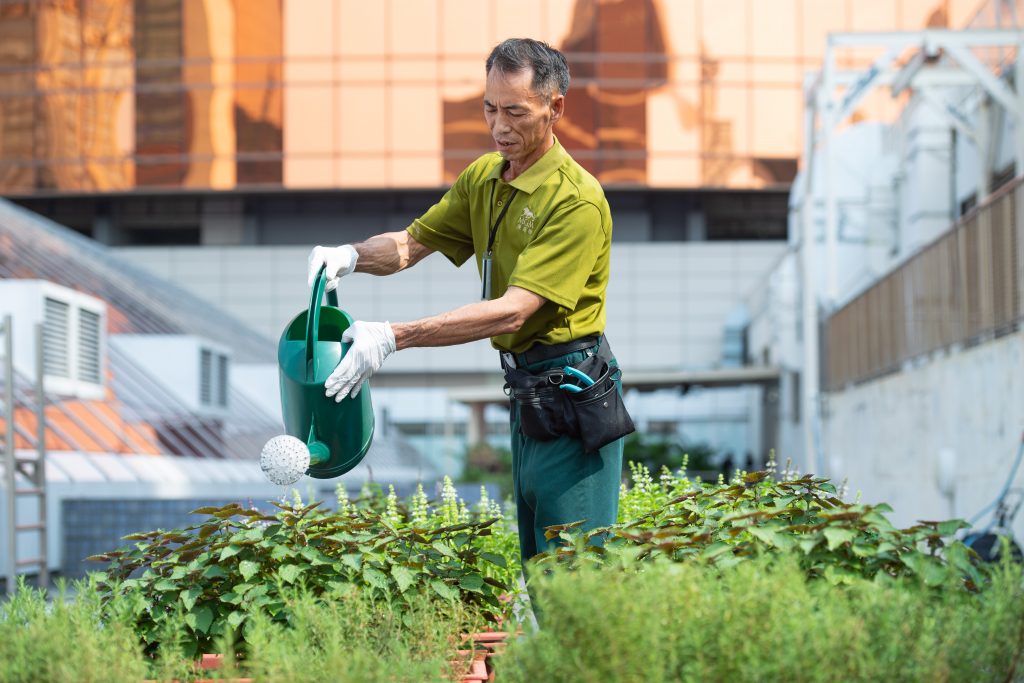
“So far,” continues Simmons, “the herbs are used in three outlets at MGM Macau – and with the positive responses from our culinary team, we are planning to create a herb garden at MGM Cotai as well.”
At Sands China, executive chef Alex Gaspar explains that in terms of responsibly sourced ingredients, they have a commitment to be ‘as local as possible’. “We have several suppliers within 300 miles that offer fantastic produce, especially in terms of organic vegetables, which are sourced from near Shenzhen. We are currently also considering the possibility of building our own hydroponic farm. This very exciting initiative would be focused not only on reducing our carbon footprint and being completely sustainable, but also on offering our guests the freshest vegetables possible – and would allow us to grow very interesting heirloom varieties of herbs and lettuces.”
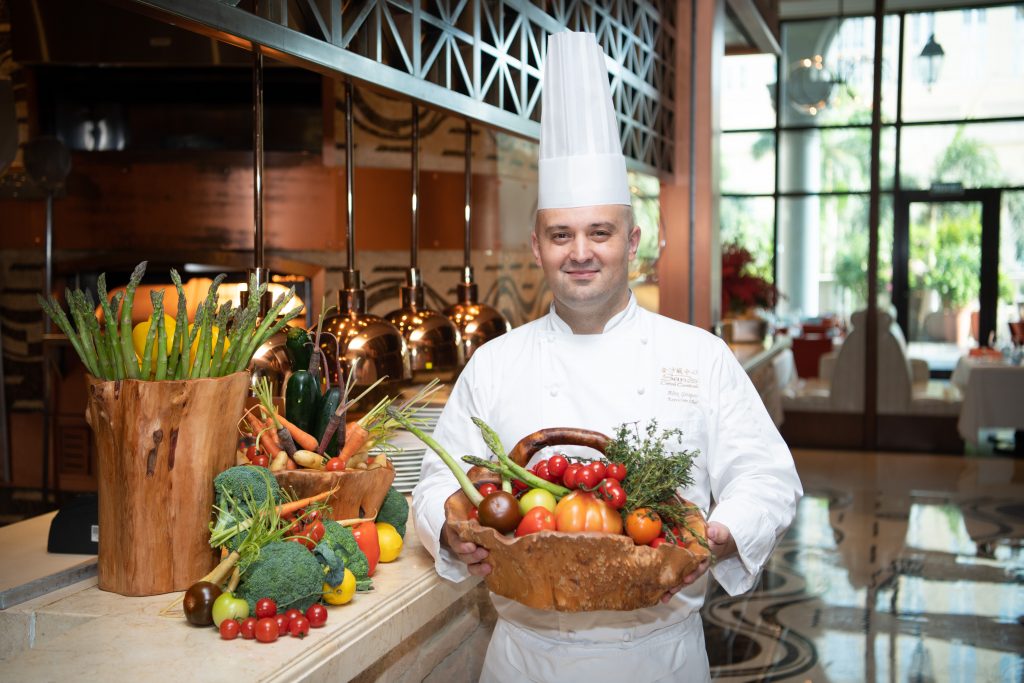
Gaspar also praises Macao’s residents for their attitudes when it comes to caring for the environment. “I think that people in Macao are becoming more and more aware of the importance of sustainability,” he notes. “I see it daily with things like recycling and finding biodegradable substitutes.”
Root, a two-year-old restaurant just down the road from the Macao Cultural Centre, is another eatery that’s taking steps towards a sustainable future. Chef Anthony Tam overcomes the challenges of sourcing local ingredients with creativity and forward planning.
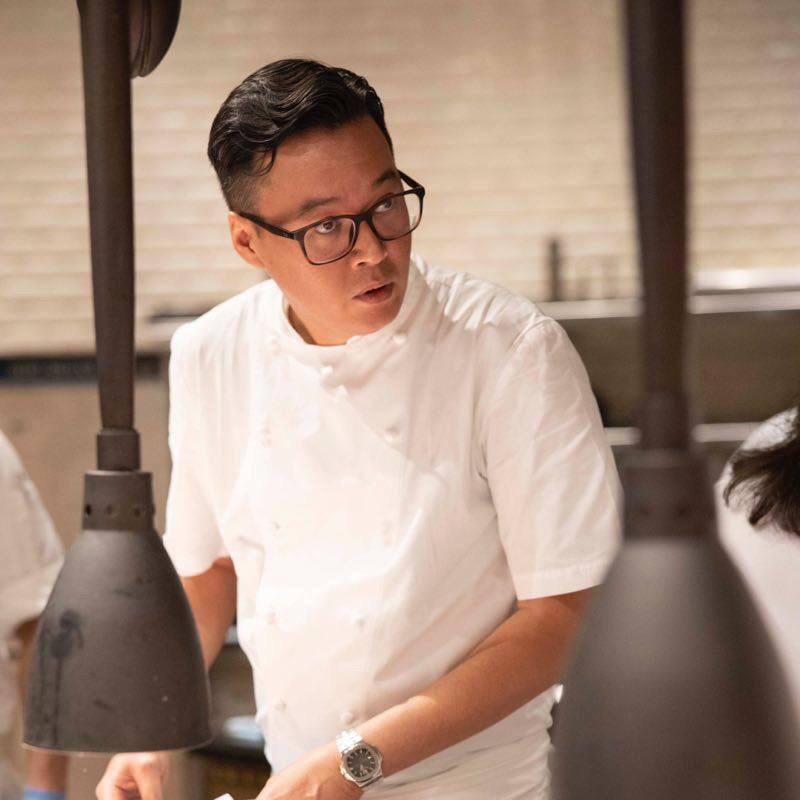
He explains: “Currently there is not a large amount of sustainable and responsibly sourced ingredients available in Macao. This can be a challenge, so when we are looking to create new dishes, we have to be creative with the ingredients available throughout the seasons.”
By offering set menus, the team can better plan ahead, reducing the chance that any food will be wasted. “We believe that asking our customers to choose the menu beforehand not only allows us to give them a wonderful experience with fresh ingredients,” says the chef, a native of Macao, “but it also allows us to greatly reduce food waste. Many of our dishes are created by using the whole ingredient – for example, dehydrating fish skins to make a wonderful delicate crisp to add texture and flavour. We have recently created our own vegetable straws made from vegetable peel. We enjoy growing our own herbs, which feature in many of the courses. We are constantly looking for new ways to reuse and reduce.”
Gastronomy connects people, communities and food. The Macanese community is still alive because of the kitchen.
Chef Hans Rasmussen
Waste not want not
Sands China doesn’t just deal with sustainability by trying to source as locally as it can. It also employs another two-pronged approach, through using innovative technologies as well as educating staff. Chef Gaspar explains: “We utilise various technologies for processing food waste, which are currently helping us to divert around 60 tons of food waste per month.
-
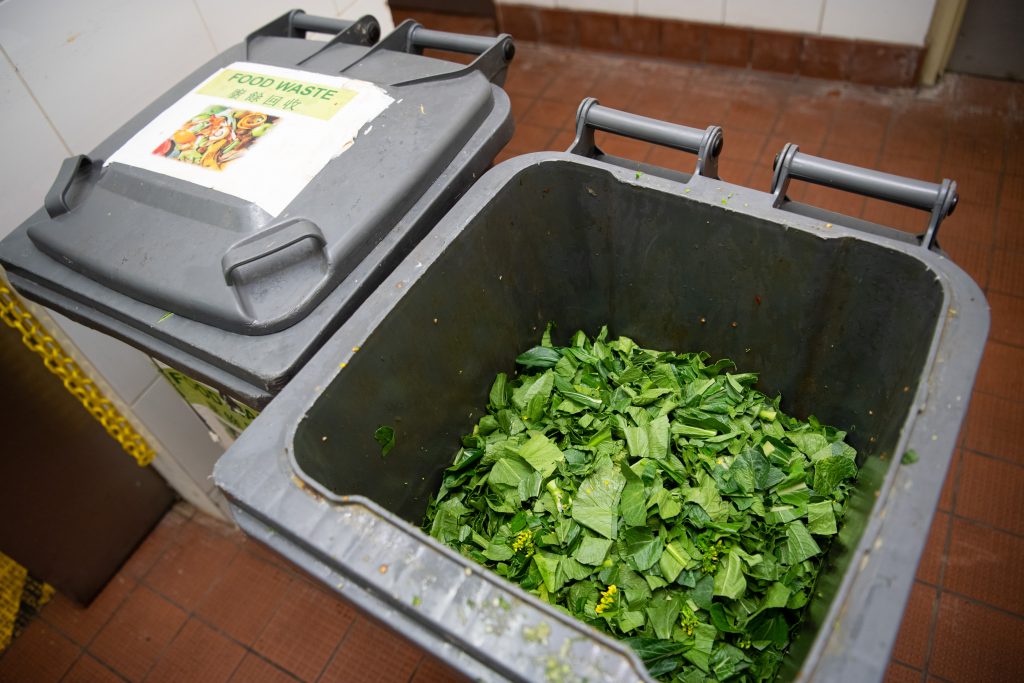
1) The food waste arrives in a bin -
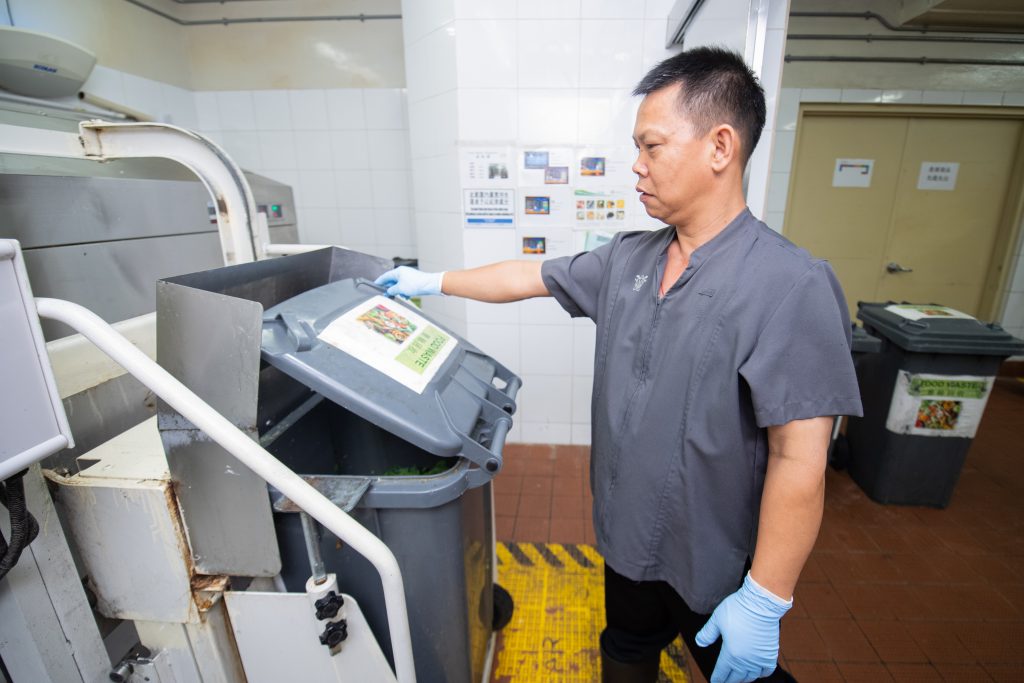
2) It is loaded into the digester -
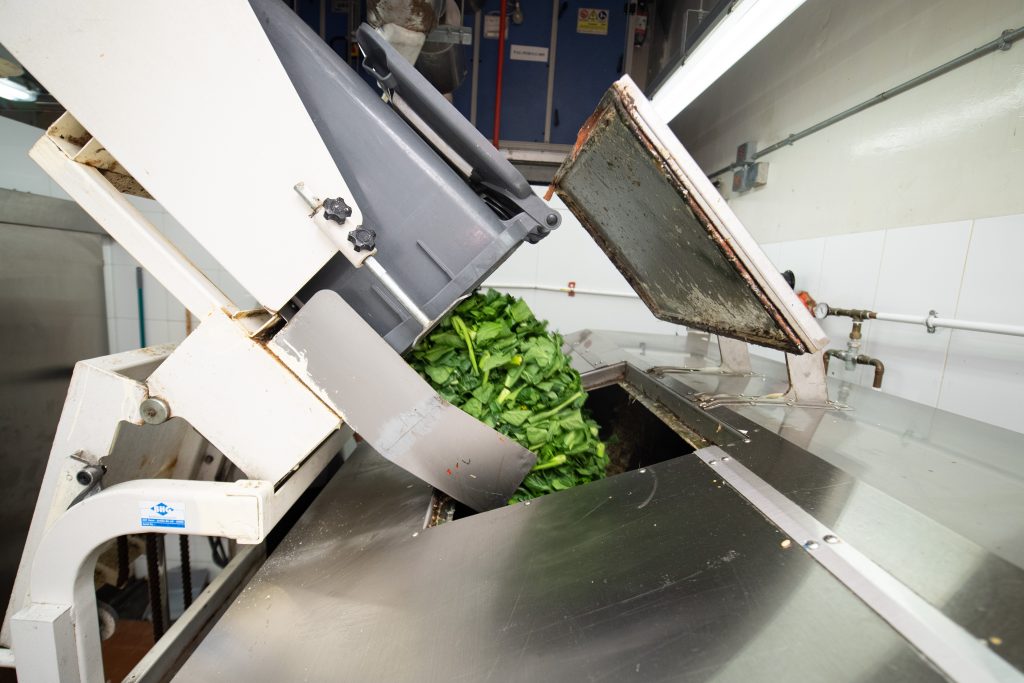
3) Food waste is being poured into the digester -
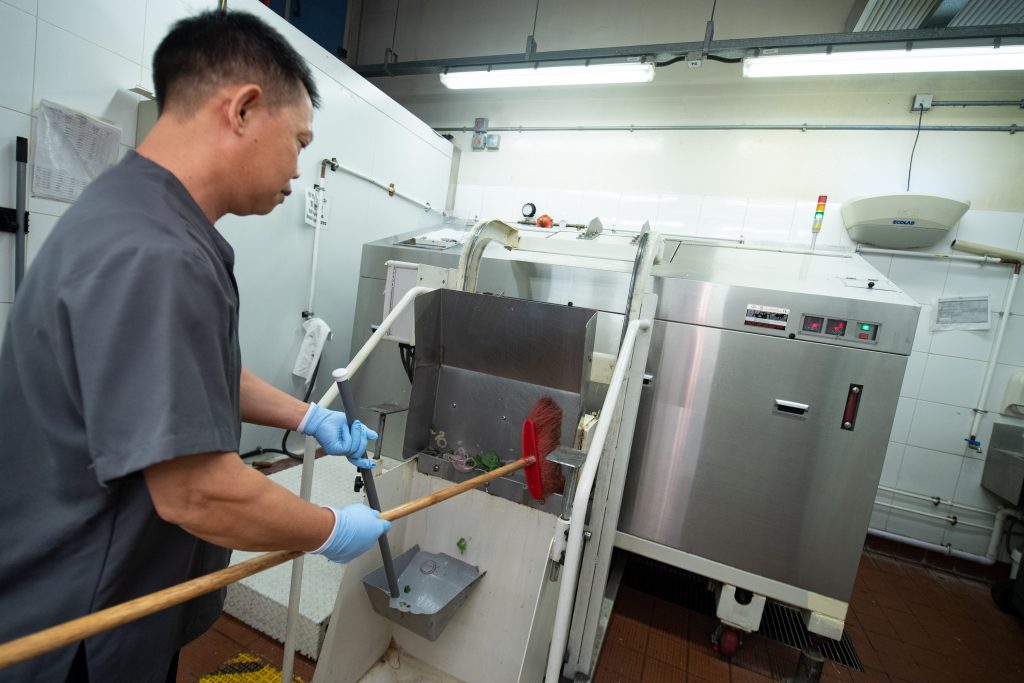
4) Employee makes sure the waste is all in
That includes seven food digesters across our properties and three Dehydra dewatering machines that reduce the volume of our food waste by as much as 70 per cent. We are also excited to be piloting Winnow soon, to see its AI technology in action.”
Winnow is a smart waste bin linked to a computer and a screen which uses sophisticated AI to analyse food waste and automatically keep track of what is being thrown away. This allows the management team to get a handle on exactly what is being wasted in order to make plans to reduce the amount of food that’s thrown away.
Chef Gaspar says: “In the end, training is the most important aspect when it comes to incorporating these technologies into the day-to-day operations of a busy kitchen. Once the members of a team understand the importance of sustainability, they will have a sense of ownership and everyone can celebrate the positive results together.”
MGM, on the other hand, implemented a ‘Clean Plate Scheme’ at two employee dining rooms over three days to encourage staff to reduce food waste by only taking what they could eat from the buffet. Simmons explains: “During this event, we reduced the waste by 817kg. It was very satisfying and something we will definitely continue with in the future.”
“Knowing how food waste could create a negative impact on the environment,” continues Simmons, “we have purchased a composting machine to help reduce food waste and it has proven to be very effective. We collect the food waste and kitchen scraps and put it all into the compost machine twice a day. Microorganisms inside the machine break it all down into compost – which we use to fertilise our rooftop farm.”
MGM works with local businesses in order to get the most out of the compost that’s produced. Florist Sei Kuai Un Lam has been working with MGM since 2007. Its owner, Chu Lo Man, says MGM – and his business – supports ‘the idea of turning kitchen scraps into a nutrient-rich landscaping compost’. Since March, the entertainment complex has been supplying Chu’s enterprise with around 300kg of compost every month.
Chu says that by using the composting machine’s produce, his florist has reduced fertilising costs by up to 25 per cent. “I intend to share this great initiative with the industry,” he claims, “for the good of the environment and also for business. I will also be increasing [our] use of organic fertilisers.”
Back at La Famiglia, chef Alves takes a preventative approach to reducing food waste. By training staff thoroughly on the menu and encouraging them to offer suggestions to guests on what to order, they help their diners to choose only want they can eat. Alves explains: “To deal with food waste, we encourage the customers not to over-order. We suggest what will be enough. If the food is not enough, they can always order again. For any kitchen waste, normally it will be shared between our staff.”
Sustainable heritage
There is a balance to be struck between using local ingredients for the sake of the environment and keeping cultural traditions alive. Take the Grand Lisboa’s Casa Don Alfonso restaurant, which is committed to using organic products but takes them from a farm, Le Peracciole, which is based on the west coast of Italy.
Executive chef at the eatery, Giovanni Galeota, says: “At Don Alfonso, all our ingredients are organic. We import our raw materials from Italy because we have specific standards. The ‘Peracciole’ farm was the reason behind the success of [the restaurant’s previous incarnation] Don Alfonso 1890.”
Galeota continues: “[The farm] produces precious extra virgin olive oil, most of the vegetables for the restaurant and the famous lemon liqueur – all the ingredients that make our dishes unique. For me, it is essential to work with Italian organic products. They have a special taste. So I think with the transport of organic products, we help the gastronomic culture to grow in Macao.” So there is a carbon footprint in the ingredients at Don Alfonso but the Grand Lisboa has also implemented schemes in other areas, like a food waste processor, water saving measures and using biodegradable straws, to help limit its environmental impact.
At the IFT, chef Rasmussen tells us that sustainability goes beyond ingredients and kitchen practices. It’s also about teaching the next generation of chefs in Macao about the cuisine and culture of the city in order to keep local traditions alive. “We do Macanese dishes in order to maintain the heritage,” he says. “It’s also about educating chefs. That’s why we have the Friday buffet for Macanese and Portuguese dishes only.”
“Gastronomy connects people, communities and food. The Macanese community is a small one but it thrives and lives. It is still alive because of the kitchen. This is also one of the reasons for our educational restaurant. It’s not just about teaching students to a put a knife or a fork on the table. It’s also to keep our cultural heritage.”
Despite the enormous challenges facing the industry, it’s comforting to know so much is being done in Macao to promote sustainable practices, in terms of implementing new technologies and educating the next generation. There’s a long way to go yet but with the major players pulling together, there is hope of a sustainable gastronomic future for the next generation. So, like your parents said, don’t waste food. Follow Macao’s lead instead.



